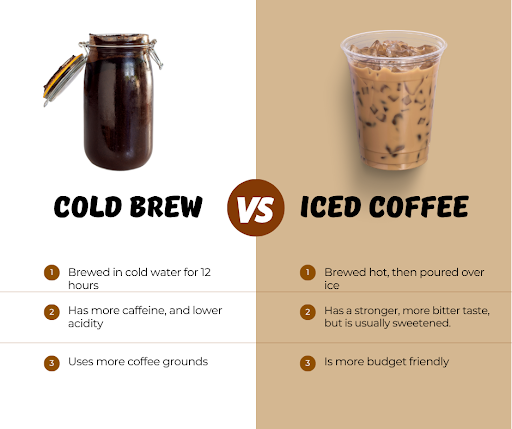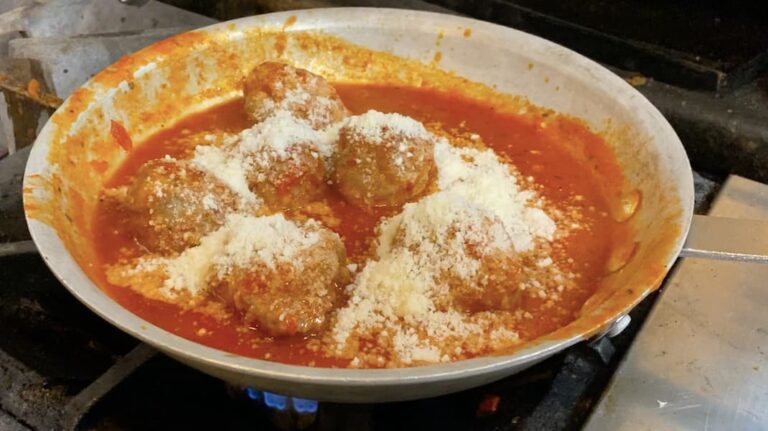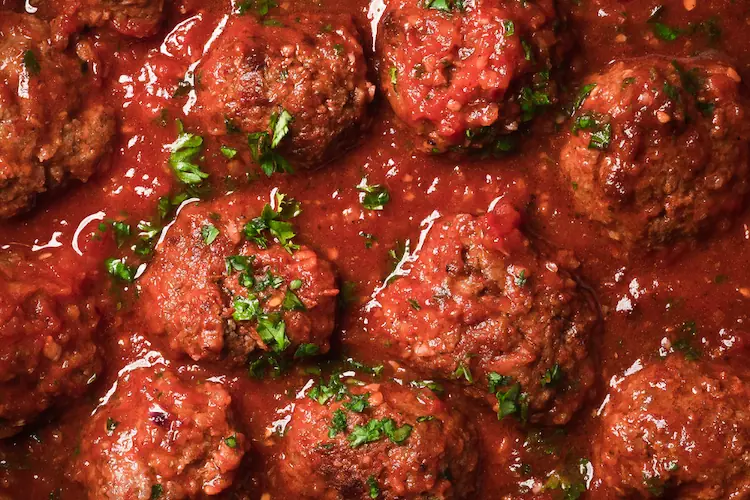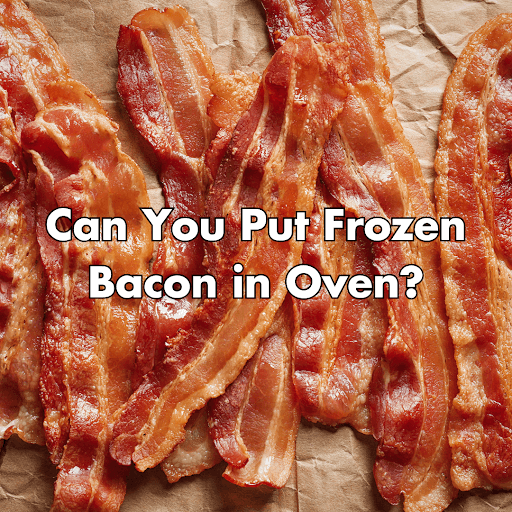I don’t know about you, but it is already starting to get hot in my place. Days are getting longer and sunnier, and my craving for iced drinks (barely dimmed during the winter) is coming back stronger than ever.
So, today I want to make a comparison between two cold coffee drinks that I plan to make very often in the next months: cold brew vs iced coffee.
These two delicious drinks are a wonderful way to enjoy coffee on a hot summer day. In the next few minutes, I’ll explain all the differences between them and, most importantly, I’ll show you how to make them at home and share a few tips and tricks.
What’s Iced Coffee?
Iced coffee is a broad term. In most coffee shops, it is done by brewing hot coffee and then pouring it over ice. After that, sweeteners or other ingredients are added as desired.
This has given rise to many popular iced coffee drinks, such as shaken espresso or caffè shakerato, which are very different from each other despite their similar names.
Without sweeteners or extra ingredients, iced coffee has an intense, somewhat acidic flavor with bitter notes. However, it is very common to add something like milk or syrup to give it a milder taste.
Its levels of caffeine depend on how you brew it. Many coffee shops typically use two or three shots of espresso to make their iced coffee drinks. For lower levels of caffeine, use a standard coffee maker or a French press.
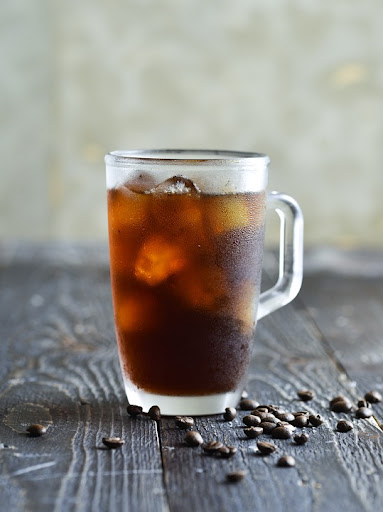
How To Make It At Home
As you can imagine, there are many different iced coffee recipes around. We’ll use the shaken espresso recipe that I shared a few weeks ago as a starting point.
All you’re going to need is:
- 2 oz espresso
- 1 oz brown sugar syrup
- ½ cup ice
- ½ cup whole milk
- a dash of cinnamon powder
- a cocktail shaker
- a strainer
Method
Step 1: First things first, make the espresso, then pour it into the cocktail shaker. Add the syrup, mix it well, and then add half of the ice.
Step 2: Close the shaker, and shake for about 20 seconds. You’ll start to feel cold on your hands when towards the end.
Step 3: Finally, strain your iced coffee into a tall glass with the rest of the ice. Add milk and a dash of cinnamon, and enjoy. With the amounts above, you can fill a 12 oz cup.
The reason why I think this recipe is a good starting point is that everything in it is customizable. Want a different type of syrup? Go for it! Don’t like cinnamon? Who cares, use your favorite spice! How about using milk foam instead of plain whole milk? Sounds delicious!
And as I was saying, even the espresso is not completely mandatory. If you prefer French press coffee or other brewing methods, feel free to go with whatever you like.
You can make a lot of delicious iced coffee drinks with this method. Let me know which one is your favorite!
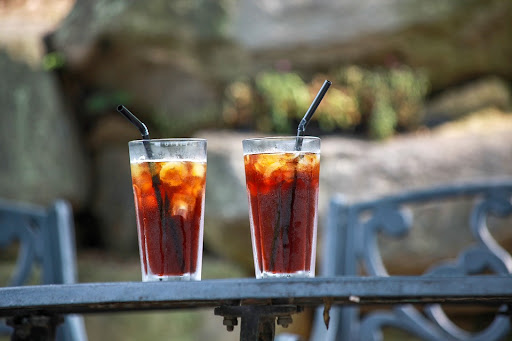
Cold Brew Coffee: What is it?
The main difference between cold brew and traditional iced coffee is the brewing process.
Unlike iced coffee, which is brewed with hot water and then cooled down with ice, cold brew coffee is made by steeping coffee grounds in cold water for a long period of time, typically 12-24 hours. This gives it a smoother, less acidic taste.
The brewing process and the long extraction period allow the grounds to slowly infuse into the water, resulting in a rich, flavorful coffee concentrate.
You can dilute it with milk or water, or sweeten it with whipped cream and syrups. Cold brew concentrate is a key ingredient in many popular coffee drinks, liked iced lattes and iced mochas. For instance, a while ago I used it to make a delicious oat milk latte.
However, it can be enjoyed as a ready-to-drink beverage. Cold brew coffee can be stored in the refrigerator for up to two weeks, making it a convenient option for those who want to make coffee in advance.
If you want to try making it at home, here’s a simple recipe. The coffee-to-water ratio is 1 to 4 cups!
Cold Brew vs Iced Coffee: Key Differences
Brewing methods aside, cold brew and iced coffee are different in flavor, acidity, caffeine content, and price.
Flavor & Acidity
Despite looking alike and being extremely refreshing, cold brew and iced coffee have a very different taste.
Thanks to its extended brewing process, cold brew coffee has less acidity and bitterness than iced coffee. And although its taste can be influenced by the type of beans used, it generally has a smooth coffee flavor with subtle nutty undertones.
For someone used to drink mostly espresso as I am, cold-brewed coffee can feel less concentrated. However, it still has a strong texture that makes it stronger than more diluted drinks.
On the other hand, iced coffee has a more pronounced acidity and bitterness. The coffee is brewed at high temperature and then cooled over ice, which can result in a diluted and slightly watery taste when the ice melts.
However, if brewed correctly, it can have a refreshing and bright taste with subtle floral notes. Also, keep in mind that many iced coffee recipes include optional sweeteners or additions like whipping cream or ice cream, so you can counterbalance everything you don’t really like.
Overall, cold brew is a great option for those who enjoy a smooth and less acidic coffee, while iced coffee is a better choice for those who prefer a more robust and refreshing flavor.
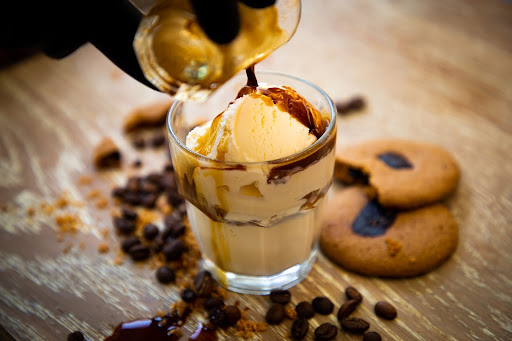
Caffeine Levels
Being made with more ground coffee, cold brew has a significantly higher amount of caffeine than iced coffee.
Depending on the coffee beans used, one cup of regular cold brew coffee can have from 240 to 280 mg of caffeine. For comparison, that’s almost twice the amount you’d get with a grande espresso at Starbucks. Some say that the amount of caffeine depends on how many hours the coffee spent steeping, but I don’t have any data to confirm that.
Iced coffee, on the other hand, has less caffeine, ranging from 150 to 180 mg per cup depending on the brewing method used.
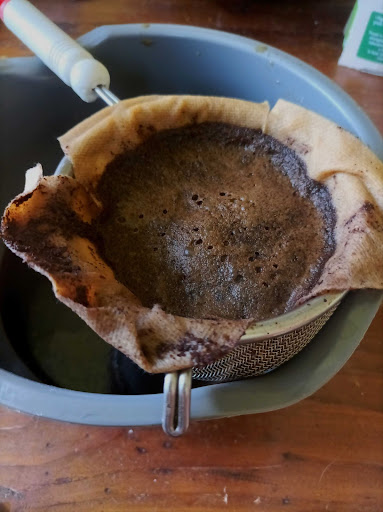
Price
This aspect is not always taken into consideration, but it is good to say a few words about it.
I might be biased because I am used to drinking mostly espresso, and a pack of coffee roast usually lasts for weeks at my house. However, the cold brew method takes A LOT of coffee to work. Even considering that cold-brewed coffee is made in bigger batches, it still takes about twice the amount of grounds that other brews.
Therefore, although the exact price depends on the coffee roast you’re using, iced coffee generally costs less.
If you’re on a budget, that’s a thing to consider. It’s the reason why I don’t often make cold brew coffee, even though I like it a lot.
Frequently Ask Questions (FAQ’s)
Q: Which is healthier to drink daily: cold brew vs iced coffee?
A: Both can be healthy choices! Cold brew is less acidic, which some people find easier on their stomachs, but both are great if you skip the heavy syrups and cream.
Q: Do I need special equipment to make cold brew vs iced coffee?
A: Not really! A simple jar or French press works for cold brew. For iced coffee, you just need your regular coffee maker and some ice cubes.
Q: Is cold brew vs iced coffee more expensive to make at home?
A: Cold brew can use more coffee grounds, so it might cost a little more upfront. But if you love smooth, rich flavor, it’s totally worth it!
Q: Can you heat up cold brew instead of making iced coffee?
A: Yes, you can warm cold brew gently if you prefer a hot cup without the bitterness. It’s a handy trick if you’ve got a batch ready and the weather suddenly turns chilly!
Q: How long does cold brew vs iced coffee stay fresh?
A: Cold brew can last up to a week in the fridge without losing flavor. Iced coffee, on the other hand, is best enjoyed within a day or it starts tasting a little stale.
Ready to Sip Smarter This Summer?
At the end of the day, whether you’re Team Cold Brew or Team Iced Coffee, both are delicious ways to beat the heat. Cold brew vs iced coffee really comes down to how much time you have and the flavor you’re craving. Cold brew is smooth, bold, and mellow — perfect if you plan ahead. Iced coffee is quick, bright, and refreshing — ideal when you need your caffeine fix fast.
Give both a try and see which one becomes your go-to drink this summer! And hey, if you have a favorite coffee tip or twist, drop it in the comments — I’d love to hear it.
☕️ Want more easy, delicious ideas? Visit Mortadella Head and explore all the flavors we’re cooking up!

